The Quaker Oats font is a custom, hand-drawn serif typeface that evokes a classic, trustworthy, and wholesome feel. While not publicly available, understanding its characteristics can inspire similar designs for a traditional, approachable brand identity.
Ever seen that iconic oatmeal box and wondered about the lettering? That familiar, friendly Quaker font is a design masterpiece that instantly communicates comfort and tradition. Many creatives, from brand owners to design students, often look for that specific font to capture a similar heartfelt and time-tested vibe in their own projects. It’s a common quest because the Quaker Oats font embodies a certain timeless appeal that’s hard to replicate. If you’ve found yourself searching for that perfect, warm, and inviting typeface, you’re in the right place. This guide will demystify the Quaker Oats font’s style and help you find fantastic alternatives for your own stunning designs!
Understanding the Quaker Oats Font: More Than Just Letters
The Quaker Oats logo has been a stable in breakfast aisles for generations. Its distinct lettering isn’t just casual typography; it’s a carefully crafted part of the brand’s identity. The font is a custom-designed serif, meaning it has small decorative strokes (serifs) at the end of the letters. These serifs give it a traditional, formal, and elegant feel, while the slightly rounded edges and warm curves make it feel approachable and friendly. It’s this blend of classic credibility and gentle personality that works so well.
Think about what you want your own brand to say. Do you aim for trustworthiness, heritage, or a comforting presence? Understanding the philosophy behind the Quaker Oats font’s design can provide immense inspiration. It’s about conveying a sense of reliability and a simple, honest quality that resonates with consumers.
Key Characteristics of the Quaker Oats Font Style
- Serif Style: A classic serif structure, but softened with slightly broader strokes and rounded terminals. This avoids the sharp formality of some traditional serifs.
- Warm Letterforms: The curves of the letters are generous and inviting, not sharp or rigid. This contributes to the friendly, approachable feel.
- Slightly Condensed: The letters are not overly wide, which can make them fit well together and give a sense of organized efficiency.
- Hand-Drawn Quality: While it looks precise, there’s an underlying organic, almost hand-lettered feel. This adds a touch of artisanal charm and authenticity.
- Readability: Crucially, it’s highly readable, even at smaller sizes. This is vital for packaging and advertising where quick recognition is key.
Why Can’t I Just Download the Quaker Oats Font?
This is a question many designers grapple with. The answer is simple: the font used by Quaker Oats is a proprietary, custom typeface. This means it was specifically designed for the brand and is not available for public licensing or download. Companies invest heavily in unique brand assets to ensure their visual identity is distinct and protected. Using a custom font like this is part of their strategy to stand out and reinforce their brand recognition. It’s like trying to find the exact secret recipe for their oatmeal – it’s unique to them!
While you can’t get the exact Quaker Oats font, this opens up an exciting opportunity. Instead of searching for a direct copy, you can learn from its design principles and find fonts that share its essence. This approach will allow you to create a unique identity while still capturing that desired feeling of warmth, tradition, and trustworthiness.
Finding Your “Quaker Oats Font” Vibe: Top Alternatives
The quest for a font that feels like Quaker Oats means looking for typefaces that blend classic serif qualities with a touch of warmth and personality. Here are some categories and specific font suggestions that capture that essence, perfect for various design needs.
Category 1: Classic Serifs with a Friendly Touch
These fonts offer the readability and heritage of serifs but with softer edges and proportions that make them feel more welcoming. They’re excellent for body text, headlines, and branding that aims for a trustworthy and established look.
- Lora: A well-balanced contemporary serif with roots in calligraphy. It has beautiful curves and a fluid rhythm, making it very readable and elegant. Perfect for websites, blogs, and editorial design.
- Merriweather: Designed to be easy to read on screens, Merriweather is a robust serif font. It feels substantial and dependable, with distinct serifs that add character without being overly decorative.
- Playfair Display: This font offers a more dramatic contrast between thick and thin strokes, giving it a sophisticated, almost antique feel. It’s excellent for headlines and short blocks of text where you want to make a strong, elegant statement.
- Crimson Text: An older-style serif typeface that’s a great alternative if you appreciate the classic look but want something a bit more refined for longer texts.
Category 2: Slab Serifs for a Sturdy, Approachable Feel
Slab serifs, also known as Egyptian fonts, have thick, block-like serifs. When paired with rounded corners or a slightly unrefined stroke, they can feel incredibly solid, friendly, and approachable, much like the Quaker Oats brand.
- Arvo: A geometric slab serif designed for both screen and print. It has a clean, modern structure but with chunky serifs that give it a sturdy and accessible personality.
- Roboto Slab: A versatile slab serif that pairs well with its sans-serif counterpart. It’s clean, geometric, and offers a contemporary take on the slab serif style, feeling very dependable.
- Trocchi: A more personality-driven slab serif with quirky, rounded serifs. It carries a friendly, slightly vintage vibe that can be very engaging.
Category 3: Hand-Drawn or Display Serifs with Personality
If you’re looking to capture that unique, almost hand-crafted feel, these fonts can be a great inspiration. Use them for logos, packaging, or headlines where you want a distinctive touch.
- Abril Fatface: A high-contrast slab serif designed for headlines. Its bold, impactful style can convey a sense of tradition and warmth, though it’s best used sparingly.
- Butler: Inspired by the famous Bodoni family, Butler is a serif font with a large x-height and short ascenders/descenders. It has a rich history but feels fresh and modern, especially in its various weights.
Where to Find These Fonts
Most of the fonts listed above are available through reliable, free font repositories, making them easily accessible for your projects. For high-quality, often free, and creatively licensed fonts, Google Fonts is an excellent resource.
Google Fonts: This is a fantastic starting point for many designers. It offers a vast library of open-source fonts that are free to use for both personal and commercial projects. You can preview fonts, test them with your text, and download them directly without any licensing worries. Learn more about their mission and explore the collection here: Google Fonts.
Other reputable sites for font exploration include:
- Font Squirrel: Offers a curated collection of free fonts that are licensed for commercial use.
- Adobe Fonts: If you have an Adobe Creative Cloud subscription, you get access to a massive library of high-quality fonts that can be activated and used across your Adobe applications and for your web projects.
Designing with a “Quaker Oats” Aesthetic: Practical Tips
Capturing the spirit of the Quaker Oats font in your designs involves more than just picking a similar typeface. It’s about embracing a complete visual philosophy.
1. Embrace Simplicity and Clarity
The Quaker Oats brand is inherently clean and straightforward. Avoid overly cluttered layouts or excessive decorative elements. Let your chosen font and core message shine through.
2. Consider Your Color Palette
Quaker Oats often uses warm, earthy tones like creamy whites, soft blues, and browns. These colors reinforce the feeling of wholesomeness, natural goodness, and reliability. Think about natural ingredients and a comforting home environment.
3. Think About Imagery
Use imagery that evokes warmth, tradition, and natural goodness. Pictures of wholesome food, cozy kitchens, or smiling families can complement your typography beautifully. Ensure images are high-quality and align with the serif font’s classic appeal.
4. Hierarchy is Key
Even simple designs need clear visual hierarchy. Use different font weights, sizes, and perhaps even a complementary sans-serif font to guide the reader’s eye. Ensure headlines are prominent, body text is readable, and any call-to-actions are clear.
5. Test for Readability
Whichever font you choose, and however you use it, always test its readability across different sizes and devices. A font that looks great as a large headline might become difficult to read in a small paragraph on a mobile screen. Tools like WebAIM’s Contrast Checker can ensure your text offers sufficient contrast for accessibility.
Case Studies: Applying the “Quaker Oats” Font Style
Let’s look at how these principles can be put into practice.
Scenario 1: A New Artisanal Bakery Logo
- Goal: Convey tradition, homemade quality, and approachability.
- Font Choice: A friendly slab serif like Arvo or a warm serif like Lora for the main name.
- Color Palette: Cream, warm brown, a hint of muted gold.
- Imagery: A rustic illustration of wheat stalks or a baker’s whisk.
- Tagline: Could use a simple, clean sans-serif for contrast.
Scenario 2: A Natural Food Blog
- Goal: Establish trustworthiness, health-consciousness, and a welcoming tone.
- Font Choice: Merriweather for headlines and body text. Playfair Display for special feature titles.
- Color Palette: Whites, light greens, and soft yellows.
- Imagery: High-quality photos of fresh produce, healthy meals, and serene natural settings.
- Layout: Clean, plenty of white space, well-organized content.
These examples show how the “Quaker Oats font” aesthetic—warm, traditional, and trustworthy—can be adapted across various applications.
Comparing Font Characteristics: A Quick Reference
To help you decide, here’s a table comparing some suggested alternatives based on key attributes:
| Font Name | Primary Style | Warmth/Approachability | Readability (Body Text) | Ideal Use Case |
|---|---|---|---|---|
| Lora | Contemporary Serif | High | Excellent | Websites, Blogs, Editorial |
| Merriweather | Robust Serif | Medium-High | Excellent | Web Body Text, Headlines |
| Playfair Display | High-Contrast Serif | Medium | Good (for shorter texts) | Headlines, Logos, Display |
| Arvo | Geometric Slab Serif | High | Good | Logos, Headlines, UI elements |
| Roboto Slab | Geometric Slab Serif | Medium-High | Excellent | Versatile: Headlines, Body Text, UI |
Accessibility Considerations with Serif Fonts
When choosing and using fonts, especially for digital content, accessibility is paramount. The good news is that many well-designed serif fonts, like those inspired by the Quaker Oats style, can be very accessible. A study by the National Center for Biotechnology Information has explored legibility factors, highlighting that clear letterforms and sufficient spacing are key. For serif fonts:
- X-Height: Fonts with a larger x-height (the height of lowercase letters like ‘x’) generally improve readability.
- Stroke Contrast: Moderate contrast between thick and thin strokes is usually easier to read than very high contrast, which can cause issues for some readers.
- Serif Thickness: Thick, blocky serifs (slab serifs) can sometimes feel solid and clear, while very thin or ornate serifs might be less legible.
- Spacing (Kerning & Tracking): Ensure letters aren’t too cramped or too far apart.
Always test your chosen font in context, especially for body text, ensuring it meets accessibility guidelines for contrast ratios and font sizes. This proactive approach ensures your message reaches everyone.
Frequently Asked Questions about the Quaker Oats Font
What font is the Quaker Oats logo?
The Quaker Oats logo uses a custom, proprietary serif typeface. It wasn’t designed by a public font foundry and isn’t available for download or licensing.
Can I use a font similar to the Quaker Oats font for my business?
Absolutely! While you can’t use the exact font, you can choose from many similar-looking serifs that evoke a comparable feeling of tradition, trustworthiness, and friendliness, as discussed in this guide.
Are serif fonts still relevant in modern design?
Yes, serif fonts are very relevant! They add a touch of elegance, authority, and history, making them excellent for branding, editorial content, and any design aiming for a classic or sophisticated feel. Many modern serif designs are also very versatile for digital use.
What makes a font feel “friendly” or “trustworthy”?
Factors like rounded letterforms, warm curves, moderate stroke thickness, and balanced proportions contribute to a friendly feel. For trustworthiness, classic serif structures, good readability, and a sense of stability are key.
How do I find fonts that match a specific brand’s aesthetic?
Start by identifying the core feelings and values the brand wants to convey. Then, look for fonts that visually represent those attributes. Explore different font categories (serif, sans-serif, slab serif, script) and compare their characteristics, using resources like Google Fonts or font review sites.
Is Lora a good alternative to the Quaker Oats font?
Lora is an excellent choice! It’s a contemporary serif with beautiful, flowing lines and excellent readability, capturing much of the friendly, classic, and approachable essence found in the Quaker Oats font’s style.
Conclusion: Crafting Your Own Timeless Appeal
Discovering the essence of the Quaker Oats font is an exciting journey into understanding typography’s power to convey brand personality. While the exact font remains a corporate secret, its core characteristics—classic structure blended with approachable warmth—offer a clear blueprint for your own design endeavors. You’ve learned about its defining features, why custom fonts exist, and most importantly, you’ve been equipped with a list of fantastic, accessible alternative fonts like Lora, Merriweather, and Arvo that can bring a similar timeless, trustworthy, and comforting feel to your projects.
Remember, the goal isn’t to replicate but to be inspired. By focusing on simplicity, clarity, carefully chosen color palettes, and the right typeface, you can evoke that same enduring appeal. Whether you’re designing a logo, a website, or any other visual asset, use these insights to build an identity that feels both established and inviting. Happy designing!
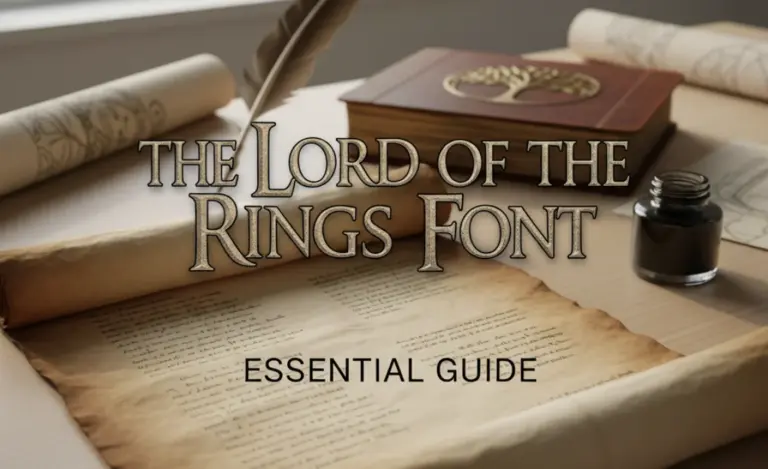
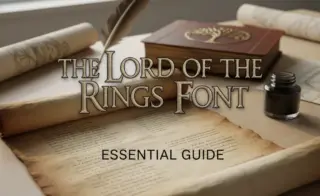
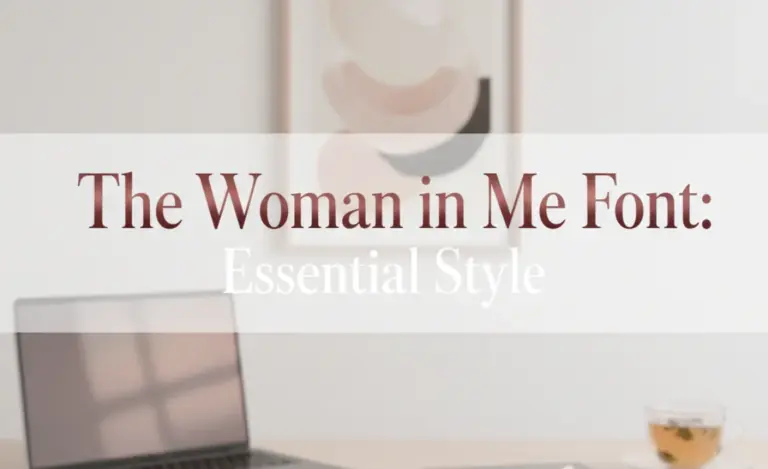
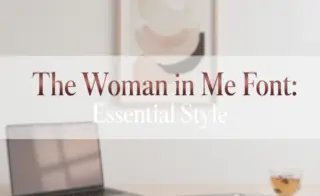
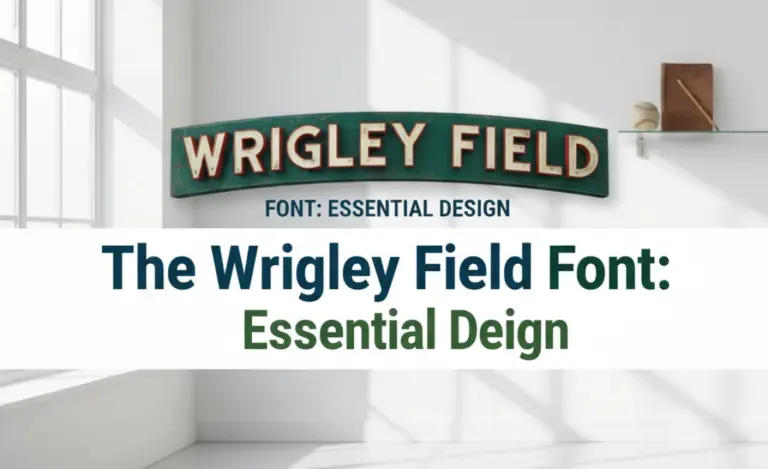

Leave a Comment